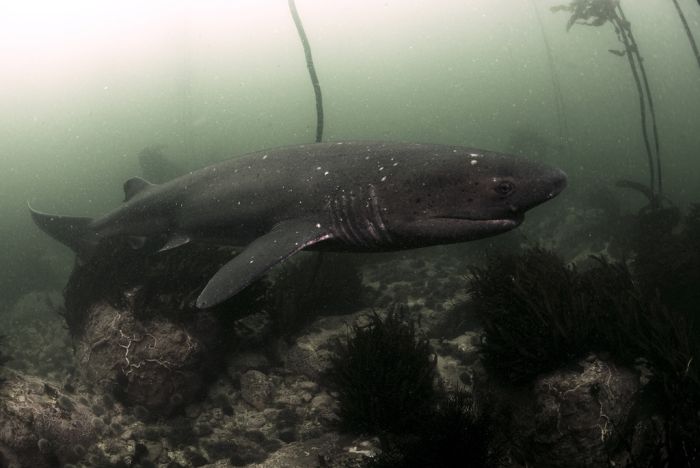|
|
Shark
|
Contrary to the common wisdom that sharks are instinct-driven "eating machines", recent studies have indicated that many species possess powerful problem-solving skills, social skills and curiosity. The brain- to body-mass ratios of sharks are similar to mammals and birds. In 1987, near Smitswinkle Bay, South Africa, a group of up to seven great white sharks worked together to move a partially beached dead whale to deeper waters to feed. Sharks can engage in playful activities. Porbeagle sharks have been seen repeatedly rolling in kelp and chasing an individual who trailed a piece of kelp behind it.
Sleep
Some sharks can lie on the bottom while actively pumping water over their gills, but their eyes remain open and actively follow divers. When a shark is resting, it does not use its nares, but rather its spiracles. If a shark tried to use its nares while resting on the ocean floor, it would "inhale" sand rather than water. Many scientists believe this is one of the reasons sharks have spiracles. The spiny dogfish's spinal cord, rather than its brain, coordinates swimming, so spiny dogfish can continue to swim while sleeping. It is also possible that sharks sleep in a manner similar to dolphins, one cerebral hemisphere at a time, thus maintaining some consciousness and cerebral activity at all times.
|
|









